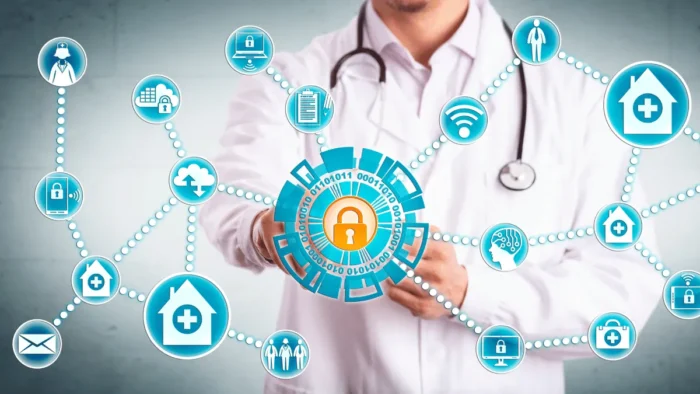The healthcare sector is built on the ethos of saving lives and promoting health. Consequently, ensuring the safety and security of healthcare facilities is not merely a requirement but an ethical obligation.
The proliferation of technology and evolving threats necessitate an enhanced approach to security measures in healthcare facilities. These measures aim to protect the trifecta of hospital constituents: patients, staff, and visitors.
Implementing Enhanced Security and Safety Measures
Every healthcare facility, regardless of its size or the services it provides, must prioritize security and safety. The reasons are manifold. Firstly, healthcare facilities house patients with varying degrees of vulnerabilities, needing protection from potential harm.
Secondly, healthcare staff, often working under intense pressure, should be ensured a safe environment to provide effective care. Lastly, visitors who come to support their loved ones should feel secure during their visits.
The threats to healthcare security are diverse, ranging from physical threats such as violence and theft to more complex issues like cyber threats, including data breaches and ransomware attacks. Enhanced security measures can help address these issues, creating an environment that engenders trust and promotes health.
Establishing a Comprehensive Security Framework
Risk Assessment: The first step in enhancing security is to conduct a comprehensive risk assessment. This process identifies potential hazards and assesses the existing security measures. It should consider both physical and cyber threats, and analyze all areas of the facility, from patient rooms to data storage systems.
Physical Security Enhancements: Physical security measures are crucial to protect people and property. They can include access control systems, surveillance cameras, alarm systems, and security personnel. Security measures should be conspicuous to deter potential threats but should also maintain a welcoming environment for patients and visitors.
Cybersecurity Measures: The rise in digital health records and telehealth services has made healthcare facilities a prime target for cyber threats. Implementing strong firewalls, using encryption for sensitive data, and regular security audits are some measures to protect against these threats. Employee training in cybersecurity best practices is also an essential component of the security framework.
Incorporating Safety Measures
While security primarily deals with protection from external threats, safety measures are internally focused, ensuring that the healthcare facility is a hazard-free environment. This includes infection control, fire safety, and measures to prevent slips, trips, and falls.
Infection Control: The COVID-19 pandemic has underscored the importance of infection control measures. Regular sanitization, proper ventilation, use of personal protective equipment, and vaccination of staff and patients are some strategies to control infection spread.
Fire Safety: Fire safety measures include installing smoke detectors and sprinkler systems, maintaining clear emergency exit paths, and regular fire drills. It’s also crucial to train staff on using fire extinguishers and how they should respond in the case of a fire.
Preventing Slips, Trips, and Falls: Healthcare facilities should be built or designed to minimize the risk of accidents. This can include non-slip flooring, adequate lighting, clearly marked steps, and handrails.
Staff Training and Emergency Preparedness: A robust security and safety framework is incomplete without well-trained staff who can respond effectively to emergencies. Regular training and drills can ensure that staff understand what to do in various scenarios, from dealing with a violent patient to responding to a data breach or a fire.
Public-Private Partnerships: Security and safety in healthcare facilities can be enhanced through collaboration with private security firms and technology companies. These entities can provide specialized knowledge and resources to strengthen the security and safety measures in place.

The Pivotal Role of HIMSS in Healthcare Security
The Healthcare Information and Management Systems Society (HIMSS) plays a pivotal role in enhancing security and safety in healthcare facilities.
As a global advisor and thought leader supporting the transformation of the health ecosystem through information and technology, HIMSS is dedicated to promoting a secure and safe healthcare environment. But what services does HIMSS offer? Let’s delve into the major areas of their work.
Advocating for Standardization
Among some of the significant services HIMSS offers is advocating for the standardization of health information and technology. Standardization is crucial for ensuring data interoperability and security. The standards promoted by HIMSS help prevent data breaches and other cyber threats, thereby contributing to the overall security of healthcare facilities.
Enhancing Staff Training and Emergency Preparedness
Another crucial service offered by HIMSS is in the area of staff training and emergency preparedness. The organization provides educational resources, hosts events and webinars, and offers professional development opportunities.
These services enhance the skills and knowledge of healthcare professionals, enabling them to respond effectively to emergencies and maintain a secure environment.
Fostering Public-Private Partnerships
In its commitment to security and safety, one of the major services HIMSS offers is fostering public-private partnerships. It brings together healthcare organizations, technology companies, and security firms to collaborate on security and safety initiatives.
Their annual conference and exhibition is a prime example of this service, where healthcare leaders, IT professionals, and security experts convene to share knowledge and collaborate on advancing healthcare security.
Establishing the Healthcare Cybersecurity Community
Finally, HIMSS offers the service of community creation, specifically through the establishment of the Healthcare Cybersecurity Community. This collaborative group focuses on advancing cybersecurity in healthcare. This community offers resources, shares best practices, and encourages collaboration, providing invaluable support for healthcare facilities in strengthening their security measures.
A Shared Responsibility for Secure Healthcare
Enhancing security and safety measures in healthcare facilities is a multifaceted task that requires continuous attention and effort. While the challenges are manifold, the potential rewards – safeguarding patients, staff, and visitors, preserving trust, and promoting a safe healing environment – are immense.
The responsibility to create a secure and safe healthcare environment is shared among all stakeholders, including healthcare providers, staff, patients, visitors, and the wider community. Together, we can ensure that our healthcare facilities remain sanctuaries of healing, care, and safety.





